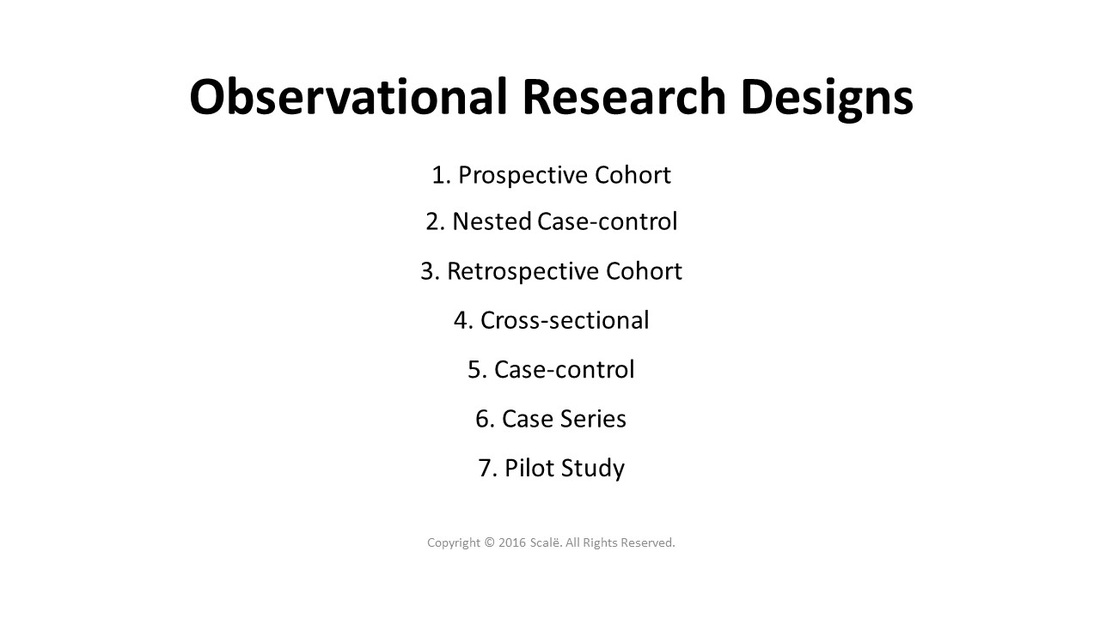Observational research designs
Observational research designs do not use random selection or random assignment
Observational research designs do not use random selection or random assignment. As per the nomenclature of observational research designs, you are "observing" predictor and outcome variables in a population. Causal effects cannot be found using observational research designs. There are inherent observation and selection biases that exist in observational research.
In observational research, researchers assess outcomes in a population without manipulating or altering treatments or groups. Observational research designs are quicker, easier, and cheaper to conduct in comparison to experimental designs. They can also be used to answer a wider spectrum of research questions.
Retrospective observational designs are used when the outcome has already occurred. Existing data is mined and analyzed for associations between predictor, confounding, and outcome variables in a population of interest.
Prospective observational designs are used when the outcome of interest will occur in the future. Researchers start in the present and follow study participants forward in time after exposure to a treatment. Observations of the outcome are taken at baseline and specified periods moving forward in time.
The correct observational research design is chosen based on how outcome data will be collected. Click on a button below.
In observational research, researchers assess outcomes in a population without manipulating or altering treatments or groups. Observational research designs are quicker, easier, and cheaper to conduct in comparison to experimental designs. They can also be used to answer a wider spectrum of research questions.
Retrospective observational designs are used when the outcome has already occurred. Existing data is mined and analyzed for associations between predictor, confounding, and outcome variables in a population of interest.
Prospective observational designs are used when the outcome of interest will occur in the future. Researchers start in the present and follow study participants forward in time after exposure to a treatment. Observations of the outcome are taken at baseline and specified periods moving forward in time.
The correct observational research design is chosen based on how outcome data will be collected. Click on a button below.
Types of observational research designs
You are collecting observational data on outcomes that have already occurred.
You are collecting observational data on outcomes that will occur in the future.
Methods used in observational research designs
Statistically adjust for baseline differences between observational groups or individually match cases and controls.
Confounding is a phenomenon where a third variable affects the relationship between a predictor and an outcome variable.
Click on a button below to continue.
Statistician For Hire
DO YOU NEED TO HIRE A STATISTICIAN?
Eric Heidel, Ph.D. will provide statistical consulting for your research study at $100/hour. Secure checkout is available with PayPal, Stripe, Venmo, and Zelle.
- Statistical Analysis
- Sample Size Calculations
- Diagnostic Testing and Epidemiological Calculations
- Psychometrics

